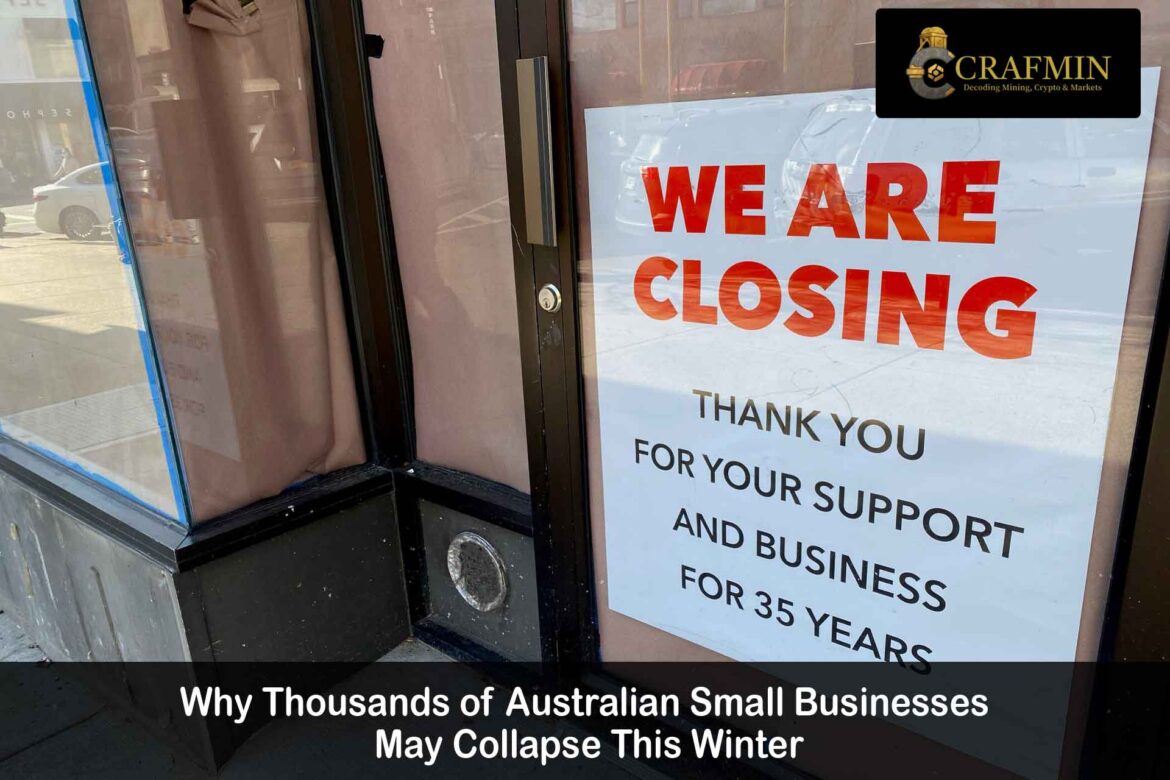
Credit: Iryna Tolmachova
Across Australia, a familiar but devastating pattern is returning: darkened shopfronts, handwritten “Closed Due to Costs” signs, and once-bustling family-run businesses gone silent.
As winter sets in, economic pressure is building fast, and analysts warn that thousands of Australian small businesses may not make it through the season.
A Crisis in Slow Motion
The warning signs have been visible for months. Utility bills have surged since early April. Leasing costs in retail strips remain unsustainably high. And consumer spending, battered by inflation and interest rate fatigue, continues to fall.
Small businesses — particularly in hospitality, retail, construction, and regional services — are being hit hardest. The 2025 Federal Budget offered some targeted support, but for many sole traders and family enterprises, the measures came too late or didn’t go far enough.
Real Stories Behind the Numbers
In suburban Melbourne, a boutique hair salon that survived two COVID lockdowns quietly shut its doors last week. The owner cited “costs outpacing customers” and no relief in sight. In regional New South Wales, a landscaping firm reported losing 40% of its client base in just three months — not because of competition, but because clients were tightening their wallets.
And these aren’t isolated cases. According to the latest figures from the Australian Bureau of Statistics, business exits in Q1 2025 were up 18% year-on-year. If the trend continues, Australia could see one of the worst winter closures since 2012.
Energy Bills Are the Final Straw

Credit: highwaystarz- Fotolia.com
Winter heating costs are proving to be a tipping point. With wholesale energy prices still elevated and commercial rates surging, small businesses are left absorbing bills that, in some cases, have doubled since 2023.
One Brisbane café owner described the past six weeks as “death by a thousand bills.” Rent, wages, and electricity have made profitability a distant dream. “We need full houses every day just to break even. And that’s not happening.”
Confidence is Collapsing Too
Perhaps more worrying than the numbers is the mood.
In the latest NAB Business Confidence Index, optimism among small business owners dropped to a 9-month low. Many now expect things to get worse before they improve — especially if interest rates rise again or consumer sentiment continues to stall.
Also Read: RBA Interest Rate Cut 2025: Michele Bullock Moves to Ease Pressure on Australian Households
Government Measures: Too Little, Too Late?
The federal government has introduced several small business grants and tax offset schemes as part of its post-COVID recovery roadmap. But many of these measures are either backloaded, overly bureaucratic, or simply not scaled to the speed of the crisis.
State governments are stepping in with energy relief for households, but small businesses — especially micro-operations — are often left navigating confusing application processes with unclear eligibility rules.
What’s at Stake?
This isn’t just about shopfronts closing. The collapse of small businesses in winter 2025 has broader economic implications:
- Job losses in casual and part-time positions
- Reduced tax revenue from business turnover
- Shrinking local economies, especially in regional Australia
- Less competition and innovation in critical industries
In short, if small businesses fall, local communities weaken.
Can Anything Be Done?
Economists suggest that the government may need to take more immediate action, such as:
- Emergency short-term energy subsidies
- Fast-tracked rent relief schemes in commercial leasing
- Direct cash flow assistance for businesses with turnover under $500K
- Simplified access to bridge financing through state-backed lenders
Without bold moves, the current small business crisis in Australia could leave a lasting scar across retail, services, and trades — sectors that make up the heart of the country’s economic engine.
Conclusion
Winter is always a tough season for business. But this year, it feels different. The cost pressures are sharper. The customers are fewer. And the safety nets feel further away.
If small business collapses become widespread, the consequences won’t just be economic — they’ll be deeply personal. Behind every closure is a story, a dream, and a livelihood built over years and erased in weeks.
As the cold months begin, Australia faces a defining moment. Support small, or lose big.

